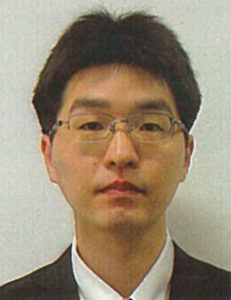 On Friday March 08th 2024, we have the pleasure to welcome in SPINTEC Maki UMEDA from Advanced Science Research Center, Japan Atomic Energy Agency, Tokai. He will give us a seminar at 11:00 entitled :
On Friday March 08th 2024, we have the pleasure to welcome in SPINTEC Maki UMEDA from Advanced Science Research Center, Japan Atomic Energy Agency, Tokai. He will give us a seminar at 11:00 entitled :
Barnett effect in ferrofluids
Place : IRIG/SPINTEC, auditorium 445 CEA Building 10.05 (access to CEA requires an entry authorization. Request it before February 27th at admin.spintec@cea.fr)
video conference : https://cnrs.zoom.us/j/93578592891?pwd=UmltQ0VQbU9leU5CbmdMS1FDYmFOZz09
Meeting ID: 935 7859 2891
Passcode: mYh4hv
Abstract : In 1915, S. J. Barnett observed the first gyromagnetic effect where a rotating object is magnetized [1]. This is called the Barnett effect, in which mechanical motion couples to the spin angular momentum due to the spin-rotation coupling. Gyromagnetic effects can relate motions including rotation and vibration with the magnetic moment and currently gain renewed attention due to the potential applications in micro-electromechanical systems (MEMS).
In a series of studies, we have investigated the Barnett effect using custom-made equipment with an optimized experimental configuration. Precise measurement of the Barnett effect enables us to identify the spin and orbital contribution to the magnetic moment whereby we have observed the Barnett effect on nuclear spins in solids [2], electron spins in paramagnetic states [3,4], and angular momentum compensation in ferrimagnets [5].
In this presentation, we briefly introduce our previous research and experimental procedures for the detection of tiny signals from the Barnett effect. Using our apparatus, we have carried out a series of tests that clarify the orbital contribution to the magnetic moment in nanogranules [6]. Furthermore, we also present the observation of the Barnett effect for rotating ferrofluid. Ferrofluid is a novel kind of functional material with a stable colloidal suspension of fine particles in a liquid solvent that exhibits both magnetic and fluid properties. By rotating the ferrofluid with the same angular velocity as solids we found that the Barnett effect arises with almost twice larger the magnitude than that in a solid state. We discuss the origin of this enhancement in relation to fluid dynamics and an inertial force with additional results.
- [1] S. J. Barnett, Phys. Rev. 6, 239 (1915).
- [2] H. Chudo et al., Appl. Phys. Express, 7(6), 063004 (2014).
- [3] M. Ono et al., Phys. Rev. B 92(17), 174424 (2015).
- [4] Y. Ogata et al., Appl. Phys. Lett. 110(7), 072409 (2017).
- [5] M. Imai et al., Appl. Phys. Lett. 113(5), 052402 (2018).
- [6] M. Umeda et al., Rev. Sci. Inst. 94(6), 063906 (2023).




